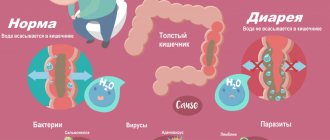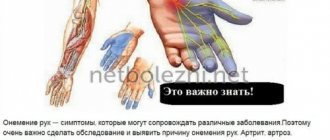If you experience a feeling of vomiting and feel dizzy, then this is a warning bell from the body, which indicates serious illness. Only a doctor can determine the cause of a pathogenic condition. Self-examination and self-medication will not lead to results. Treatment should be carried out using comprehensive measures.
Dizziness (vertigo syndrome) is a feeling during which a person feels that all objects are spinning around him.
Nausea is the stomach's desire to vomit.
Why do unpleasant symptoms occur?
Causes of nausea not related to illness include:
- Overeating and eating fatty foods . In this case, nausea appears after eating as a response of the body - it cannot cope with a “heavy” dish in terms of calories.
- Psychological factors. Constant stress, depression, and anxiety disrupt the overall metabolism in the body. Nausea occurs as soon as a person remembers an unpleasant experience or smells a familiar smell.
- Seasickness (motion sickness) . The receptors of the vestibular apparatus are irritated, a feeling of nausea occurs, which may be accompanied by vomiting.
- Pregnancy. Nausea and dizziness are observed in the first and second trimester of pregnancy. The sensation may progress to vomiting, but relief occurs on its own as the body adapts to pregnancy and the baby grows in the womb.
- In women, an unpleasant symptom often occurs during the premenstrual period.
- Impact of third party factors. An acute feeling of nausea can occur due to exposure to chemicals, medications, overheating, increased body temperature and other reasons.
Constant nausea often indicates the presence of various diseases. In some cases, depending on the stage of development of the disease, the feeling may occur periodically. He is called:
- Diseases that require urgent surgical intervention: appendicitis, acute pancreatitis, peritonitis of the gastrointestinal tract, intestinal obstruction.
- Chronic diseases associated with dysfunction of the gastrointestinal tract: peptic ulcer, cholecystitis, irritable bowel syndrome.
- Intestinal infections: enterovirus and rotavirus, cholecystitis, food poisoning.
- Liver diseases: hepatitis, cirrhosis.
- The presence of a foreign body in the abdomen (esophagus, intestines).
- Food allergies.
Severe headache and nausea can bother a person after traumatic brain injury, hypertension, diseases of the endocrine system, migraine, and after chemotherapy.
Development mechanism
The occurrence of nausea is based on the activation of the neural arc of the gag reflex at a level insufficient for the onset of vomiting. The most common trigger for a reflex reaction is irritation of peripheral receptors located in the digestive and a number of other organs. Less commonly, the reflex is activated due to stimulation of the vomiting center, the effect of toxic substances or metabolites on the receptive zone of the bottom of the fourth ventricle of the brain. In a number of conditions (for example, pregnancy), a combination of several triggering factors is possible.
Regardless of the reasons that provoked the development of nausea, the mechanism of its formation is based on a single pathophysiological process. When the vomiting center is activated, the tone of the muscular lining of the stomach decreases, its peristalsis slows down or completely stops. A simultaneous increase in the tone of the duodenum and the proximal part of the jejunum causes duodenogastric reflux. An increase in the volume of gastric chyme leads to reflex relaxation of the cardia, contraction of the antrum, diaphragm and intercostal muscles, which is perceived as a urge to vomit.
Clinical picture
Nausea, depending on the cause, may be accompanied by other symptoms.
- When eating fatty foods: abdominal pain, vomiting, weakness, drowsiness.
- Nausea is often observed in a child as a reaction of the body to an allergen. Adults and children equally experience: rash, redness, diarrhea, flatulence, runny nose, dry cough.
- In case of poisoning: flatulence, diarrhea, headaches, weakness.
In diseases, depending on the diagnosis, the manifestations differ:
- Diseases of the liver and gastrointestinal tract often resolve with vomiting, weakness, and body temperature rises to 39 degrees. There is a feeling of heaviness in the abdomen, diarrhea/constipation, and flatulence.
- Appendicitis will almost always be accompanied by acute pain in the lower abdomen and increased body temperature.
- With diseases of the cardiovascular system, nausea in the morning can turn into weakness in the afternoon, headaches, dizziness, and loss of consciousness.
Normally, in the absence of health problems, a person needs to eliminate the cause of the symptom. For example, exclude exposure to odors, consult a doctor about the need to take medications that calm the nervous system (if we are talking about psychological factors). Take a sorbent to remove toxins from the body in case of allergies or poisoning.
If, after treatment, pain, dizziness and nausea, as well as other accompanying symptoms, do not go away, you should urgently consult your doctor or gastroenterologist.
general characteristics
Patients characterize nausea as a painful sensation in the mouth, throat, along the esophagus, in the epigastrium, accompanied by a desire to induce vomiting or the urge to vomit.
In addition to discomfort in the gastrointestinal tract, there is often excessive secretion of saliva, an unusual taste in the mouth, coldness of the extremities, sweating, hyperhidrosis of the palms and feet. Characterized by weakness, dizziness, darkening of the eyes, unsteady gait. Compression may be felt in the epigastrium. From the outside, patients look confused, uncertain, pale, and sweaty. In some cases, a connection between nausea and food is revealed. In case of dietary errors, mild poisoning, and a number of gastroenterological diseases, the patient’s condition may improve spontaneously or after vomiting. Constant nausea lasting longer than two days is an indication for consultation with a gastroenterologist or therapist. The combination of nausea with thoracic, abdominal and headache, vomiting of blood or coffee-ground-colored masses, black tarry stools, hyperthermia over 38 ° C, convulsions, lack of urine, confusion is a sufficient reason to seek emergency medical help.
Treatment and diagnosis
If you are constantly bothered by nausea, a specialist will find out the causes of the symptom in several stages:
- Survey. Drawing up a detailed clinical picture allows the doctor to navigate further actions.
- Purpose of research. Depending on the circumstances under which the unpleasant feeling appeared, the doctor may prescribe: an ultrasound, a general blood test, a urine and stool test.
If the diagnostic results obtained show the absence of any diseases, the doctor will pay attention to the following points:
- whether a psychological disorder can be accompanied by nausea;
- whether relatives experienced similar symptoms;
- what foods the patient ate in the last 48 hours;
- How does this feeling affect the general condition of a person: do headaches and nausea occur along with it, are diarrhea, constipation, and flatulence bothering you.
Diagnostics
Patients with complaints of nausea are initially referred to a gastroenterologist. The doctor conducts a comprehensive examination of the digestive system to identify structural and functional disorders, which are most often accompanied by nausea. To determine the cause of nausea, laboratory and instrumental studies are used, the most informative of which are considered:
- Ultrasonic method
. Ultrasound of the abdominal organs is a non-invasive and safe examination that can be prescribed to all patients, including pregnant women. Using sonography, the doctor detects organic causes in the gastrointestinal tract and biliary system: thickening or deformation of organ walls, space-occupying formations. - X-ray examination
. Nausea is a common symptom of diseases of the esophagus and duodeno-gastric zone, for the detection of which radiography with barium contrast is used. To assess the patency of the digestive tract and the rate of passage of chyme, a series of delayed x-rays are performed. - Endoscopic examination
. Using endoscopy, the condition of the upper gastrointestinal tract is visually assessed: the mucous membrane is examined, signs of inflammation and destruction are identified, and a biopsy of altered tissue areas is performed. If reflux is suspected, the method is supplemented by performing 24-hour pH measurements inside the stomach and lower part of the esophagus. - Examination of feces
. A coprogram is carried out to detect characteristic signs of gastrointestinal pathologies, which are manifested by nausea. If there are symptoms of an intestinal infection as the cause of vomiting, bacteriological culture of stool is recommended to detect microorganisms. Additionally, the level of fecal elastase is determined. - Lab tests
. To clarify the diagnosis, a biochemical blood test with liver tests and an assessment of the levels of acute phase indicators are indicated. Using serological reactions, pathogens of intestinal infections are identified and helicobacteriosis is detected. The method is supplemented with specific breathing tests.
If there are difficulties in diagnosis, CT or MRI of the abdominal cavity, duodenal intubation with bacteriological culture of bile are performed. Sometimes allergy tests are performed with the most common allergens. Women who complain of nausea should be referred to a gynecologist for consultation. After excluding gastroenterological pathology, a comprehensive neurological examination and consultation with other specialists are indicated.
Various medications are used to relieve nausea
First aid
In the absence of chronic and current diseases, the doctor will prescribe treatment aimed at restoring the body. First of all, the patient will be advised to:
- Establish an enhanced drinking regime.
- Take anti-inflammatory and painkillers.
- In some cases, when it comes to severe forms of roto- or enterovirus, antibiotics are prescribed.
To remove toxins from the body, therapy may be accompanied by simultaneous intake of sorbents. The Sorbex series are safe enterosorbents that do not treat the disease, but can alleviate its symptoms and course. Their composition is based on granular activated carbon, which absorbs harmful substances and removes them from the body naturally. In the available line of products you can choose drugs for children and adults.
Treatment
Help before diagnosis
To reduce the intensity of nausea, it is recommended to drink ginger or mint tea and slowly eat a slice of lemon. It is better to eat food in small portions, avoid smoked and spicy foods, carbonated drinks and fast food. After eating, it is undesirable to take a horizontal position. People prone to allergies should limit their consumption of strawberries, peanuts, and citrus fruits as much as possible. Severe prolonged nausea, which makes it difficult to eat and is accompanied by vomiting, is grounds for contacting a gastroenterologist.
Conservative therapy
The treatment regimen is selected individually, after identifying the cause of nausea. In addition to medications, diet therapy and psychotherapy methods are used, which are especially effective for functional digestive disorders in pregnant women. Etiotropic and pathogenetic therapy are aimed at eliminating the cause of the underlying disease and individual parts of the mechanism of its development; medications are also prescribed to relieve unpleasant symptoms. The most commonly used groups of pharmaceuticals are:
- Sedative herbal medicines
. For moderate nausea, herbal medicines (valerian, motherwort) help, which normalize the autonomic nervous regulation of the digestive tract. Sometimes combined medications and bromides are used. - Antihistamines
. These remedies are good for relieving nausea, the causes of which are associated with an allergic reaction to food. For systemic allergies, short courses of glucocorticosteroid hormones are additionally prescribed. - Prokinetics
. Medicines stimulate peristalsis of the digestive tract, normalize the tone of the esophageal and gastric sphincters. To eliminate nausea, prokinetics are often combined with enterosorbents. - Antisecretory agents
. Proton pump inhibitors and H2 receptor blockers are indicated for nausea caused by increased stomach acid. A new class of drugs - prostaglandins - is highly effective. - Serotonin receptor antagonists
. Medicines have a strong effect because they directly affect receptors in the brain. Recommended for nausea that is not relieved by other means. - Antibacterial drugs
. Medicines in this group are used in cases where nausea is caused by intestinal infections. For parasitic infestations, anthelmintic and antiprotozoal drugs are indicated.
Useful tips
If you are worried about nausea and vomiting, weakness, here are some useful recommendations that will help alleviate the condition:
- Abundant air flow - you can open a window or sit in front of a fan.
- Drinking fluids. Drink more water, it will also help prevent dehydration and speed up your metabolism.
- Compress. The feeling of nausea will go away if you apply a cold compress to the forehead and neck area.
- Do not lie down, the bitterness in your mouth and nausea will intensify - gastric juice may rise up the esophagus. This is why gastroenterologists do not advise “resting” after eating.
It is recommended to drink at least 1 glass of warm water every morning on an empty stomach. The liquid will “wake up” the gastrointestinal tract and normalize metabolism. Also follows:
- minimize the amount of “heavy” food in the diet;
- exclude carbonated drinks;
- take care of the cleanliness of products that do not require heat treatment (berries, vegetables, fruits).
As a sorbent for quick relief of abdominal pain, if nausea and vomiting occur due to poisoning and allergies, always have supplements in the form of Sorbex enterosorbent in your medicine cabinet.
SORBEX® Duo
SORBEX® Classic
SORBEX® Ultra
Medicines and dietary supplements of the Sorbex series (Sorbex, Sorbex Ultra, Sorbex DUO) are based on improved activated carbon. Thanks to modern production technologies, the sorption capacity of Sorbex® has been significantly increased, which ensures its high sorption ability to absorb toxins, bacteria and other harmful substances.
Sorbex capsules contain activated carbon in the form of granules, which ensures adsorption activity throughout the entire residence time of the sorbent in the gastrointestinal tract. The effectiveness of granular carbon almost does not decrease within 36-48 hours, which allows you to increase the intervals between doses of this drug and reduce the dose. For adults with chronic diseases caused by endogenous intoxications, it is recommended to take 2–6 capsules 3 times a day for 10–15 days. For children over 7 years old, take 1-3 capsules 3-4 times a day. The drug is administered orally with water at intervals of 1.5–2 hours before or after meals or medications.
SORBEX ULTRA is a dietary supplement in the form of capsules based on highly dispersed activated carbon with extremely high adsorption activity, therefore it is especially effective for acute poisoning. Adults are recommended to take 1 capsule 2-3 times a day.
SORBEX DUO is a dietary supplement for the comprehensive cleansing of toxins from the body, combining the unique properties of a hydrocarbon sorbent in the form of granules and milk thistle extract. Thanks to this composition, SORBEX DUO helps reduce the manifestations of intoxication, protects and restores liver function. Adults take 2-3 capsules 2-3 times a day. Children aged 7 years and older – 1 capsule 2-3 times a day before or 1-1.5 hours after meals. Duration of use from 3 to 15 days
It should be borne in mind that sometimes nausea may be the only early sign of serious illness, so this symptom should not be ignored and you should consult a doctor.
Attention! Self-medication can harm your health!
Causes of drowsiness, headache, nausea and weakness
Drowsiness, headache, nausea are unpleasant symptoms that can bother the patient for a long time. They occur for various reasons, from simple fatigue or poisoning to the initial stages of brain diseases. It is impossible to carry out an accurate diagnosis on your own. The patient’s main task is to make an appointment with a doctor and answer questions about how and when the pain appeared, in what area it is located and what symptoms it is accompanied by.
Endocrine system diseases
One of the reasons for constant weakness and drowsiness, aching headaches is diseases of the endocrine organs. They are represented by organs that produce hormones into the blood and thereby participate in most biochemical processes in the body. Hormonal imbalance leads to poor health, headaches and other disorders.
- Diabetes mellitus is a disease characterized by insufficient levels of insulin produced by the pancreas in the blood. This leads to increased glucose concentrations, constant weakness, destruction of vascular walls and other long-term complications. The first symptoms of the disease include a constant feeling of thirst, weakness, dry mouth, and nausea. To confirm the diagnosis, blood glucose levels are measured.
- Hypothyroidism is a deficiency of thyroid hormones of any origin. In its mild form, it does not manifest any symptoms, but can also cause weakness, apathy, weight loss or gain, deepening of the voice, and the appearance of a goiter. Hypothyroidism occurs as a result of diseases or injuries of the thyroid gland, iodine deficiency in the diet, and also as a result of diseases of the pituitary gland.
In women, drowsiness, headache, weakness and nausea may occur in the first trimester of pregnancy due to toxicosis. Deterioration in well-being is provoked by the body’s adaptation to changes and restructuring of the immune system. In this case, it is important to avoid dehydration and undergo regular examinations with a doctor. In the first trimester of pregnancy, manifestations of toxicosis are allowed, but in the later stages this condition is not considered normal and requires hospitalization.
Intoxication
Poisoning with food, medicine or alcohol, gaseous substances is a dangerous condition that requires urgent medical attention. These compounds cause acute intoxication, nausea and weakness, and a sharp deterioration in health. Similar symptoms develop when bitten by poisonous animals or insects. They can be mildly expressed if a small amount of toxins enters the body. However, in high concentrations, toxic substances can cause damage to the nervous system and other dangerous consequences.
There are several types of poisoning, depending on the type of toxic substance and how it enters the body.
- Food poisoning is the most common type. In everyday life, they can occur in any person and quickly go away on their own. However, some types of poisonous plants, expired and perishable foods cause a vivid picture. The first recommendations are a water diet, taking sorbents and gastric lavage if necessary.
- Poisoning from medications and alcohol can also occur due to negligence. Toxins spread quickly through the blood and can cause damage to brain tissue. The danger comes from drinking large doses of alcohol once or drinking low-quality alcohol, as well as regularly drinking drinks, even in small quantities.
- Poisoning with poisonous mushrooms is one of the most dangerous causes of weakness, nausea and headaches. If your health worsens after eating even edible mushrooms, especially those collected yourself, you should urgently consult a doctor. The poisons contained in mushrooms cause toxic damage to the brain and can lead to disruption of vital functions.
- Poisoning by toxic gases is possible even at home. A natural gas leak may cause drowsiness, weakness, nausea, and headache. If these symptoms appear, it is urgent to provide access to oxygen and leave the room.
The pattern of various types of intoxication depends on the type of toxic substance and the method of its entry into the body, as well as on the severity of the symptoms. If there is a significant deterioration in health, hospitalization and a course to relieve intoxication are required. The only exceptions are mild forms of food poisoning, for which taking sorbents is sufficient.
Inner ear diseases
Headache is one of the first signs of inner ear diseases. This organ is responsible not only for hearing, but also for balance, and has a complex structure. It is formed by a bony labyrinth, within which there is a membranous labyrinth. Various hearing and balance disorders, as well as headaches and nausea, can be associated with diseases of the structures of the inner ear or the vestibular nerve - it is involved in the innervation of this organ.
- Meniere's disease is a chronic disease in which the production of endolymph, the fluid contents of the inner ear, increases. The pressure inside the labyrinth increases, which provokes attacks of acute headaches. The disease manifests itself in attacks that can last from several hours to days.
- Chronic otitis media is a dangerous disease that can cause purulent complications and even hearing loss. The pain can be localized on one side or spread to the entire surface of the head. With the development of purulent inflammation, characteristic discharge from the ear canal is observed.
- Inflammation of the vestibular nerve (vestibular neuritis) – often manifested by dizziness, nausea, and headache. Its symptoms gradually disappear over several weeks, subject to timely treatment.
Headache, nausea, weakness and dizziness are symptoms for which additional examination of the inner ear is prescribed. It is important to determine the source of pain and distinguish diseases of the organ of hearing from various disorders of the central nervous system.
Diseases of the cardiovascular system
Heart and vascular diseases are common among patients of any age. They can be congenital or acquired, occur in acute or chronic forms. Their causes include various anomalies in the structure of the heart and blood vessels, as well as injuries, inflammatory processes, and metabolic disorders. At risk are overweight patients who lead a sedentary lifestyle, as well as smokers. Frequent consumption of alcohol and poor nutrition can cause deterioration of blood vessels.
- Atherosclerosis is a chronic disease in which the walls of blood vessels become dense and insufficiently elastic. Deposits of various compounds, including cholesterol, appear on their inner wall. They narrow the vascular lumen, and insufficient blood flows to the hands and feet, as well as to the brain cells. There is also a risk of a blood clot breaking off and completely blocking the vessel.
- Hypertension is a persistent increase in blood pressure. If in a healthy person this figure remains within 120/80 mm. rt. Art. or may increase slightly, then with hypertension it is significantly higher. The condition threatens rapid fatigue of the heart muscle and stretching of the muscle layer of blood vessels. Blood pressure must be adjusted with medications to prevent myocardial infarction.
- Hypotension is low blood pressure. The condition is manifested by weakness, fatigue, decreased concentration and frequent headaches. With a sharp decrease in pressure, fainting is possible. For hypotension, it is important to dose the physical activity regimen and follow a diet to increase blood pressure. This disease is dangerous due to insufficient blood supply to the brain, which can cause ischemic stroke.
Doctors at the Clinical Brain Institute recommend periodically measuring your blood pressure yourself. In your home medicine cabinet you should definitely have a tonometer and medications to increase and decrease blood pressure. They are not recommended to be taken without a prescription, but during an attack they can be extremely useful for normalizing well-being.
Other reasons
Drowsiness, weakness, nausea and headache are common symptoms that can occur in a healthy person. They indicate severe fatigue, anxiety and stress, and disappear after proper rest. However, this condition may correspond to various diseases and disorders that require medical attention:
- migraine is a primary headache in which attacks can last from several hours to several days;
- iron deficiency in the body is one of the causes of anemia (lack of oxygen) and disruption of the formation of hemoglobin;
- sudden weight loss, including during stress or following strict diets;
- regular use of certain groups of drugs (antipsychotics, hormonal and painkillers, drugs to correct uric acid levels may have side effects);
- brain tumors are a dangerous but rare cause of headaches, weakness and drowsiness.
Doctors recommend monitoring your health. Constant weakness, drowsiness, decreased concentration - this is not a normal state. At home, it is worth adjusting your diet and including a sufficient amount of important vitamins and microelements in your diet. Additional medications are prescribed only based on the results of the examination.
Diagnostic methods
At the Clinical Institute of the Brain you can undergo a full diagnosis, which will include examinations of any level. The first stage is a consultation with a therapist to identify complaints and prescribe further procedures. Next, an individual diagnostic scheme is selected, which may include the following methods:
- blood tests (general and biochemical) to determine inflammatory processes in the body, disruption of the functioning of individual organs and systems, measurement of hemoglobin levels;
- Ultrasound of internal organs, including the heart;
- electrocardiography – diagnosis of heart rhythm, one of the main ways to determine heart defects;
- MRI, CT scan of the brain - is prescribed for suspected neoplasms, the presence of areas of ischemia and other pathologies.
It is important to understand that competent and timely diagnosis is the key to successful treatment. The use of modern equipment, which is located at the Clinical Institute of the Brain, greatly simplifies the task and allows you to quickly make the correct diagnosis.










